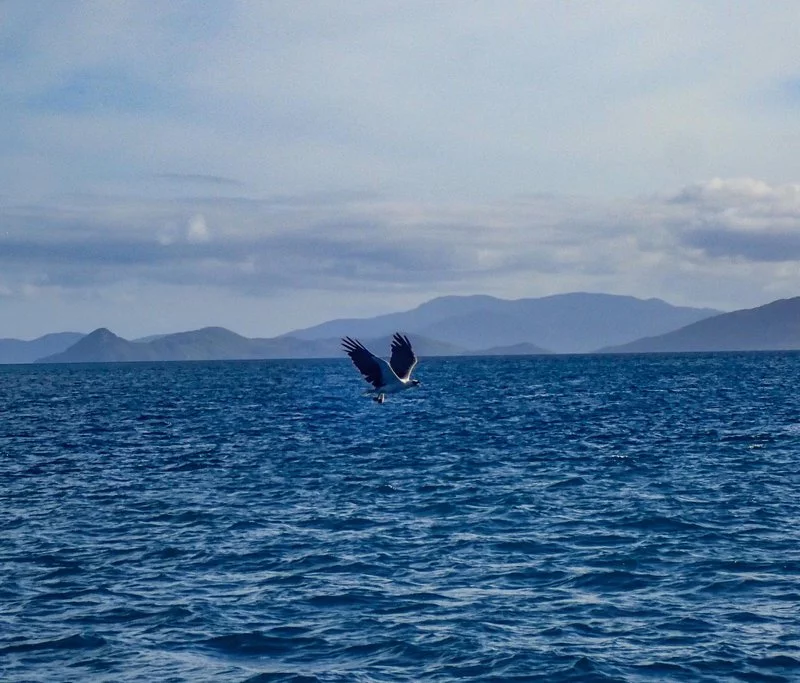The white-bellied sea eagle, also known as the white-breasted sea eagle is a large bird of prey in the Accipitridae family, which includes other eagles, hawks, and kites. A prominent feature of all the birds in this group is their large curved, sharp beaks which they use to tear into their prey. Eagles are some of the larger birds in the bird of prey group with some species having a wing span of over 2 meters.
The white-bellied sea eagle has quite a large distribution, it can be found in India, Sri Lanka, Bangladesh, all of Coastal southeast Asia, the Philippines, China, New Guinea and Australia. As their name suggests this species inhabits coastal areas, however they can also be found further inland around swamps, lakes and wetlands. They are quite territorial so will rarely travel far from their nest. The territories are on average 3 kilometres squared and usually only occupied by one breeding pair. This territory doubles as the eagles hunting range and they will defend it from outsider eagles.
While not the largest eagle species, the white-bellied sea eagle still reaches a formidable size. An adult can grow to have a wingspan of up to 2.2 meters. Males can grow to 80 centimetres from head to tail and weigh up to 3 kilograms while females of the species are usually slightly larger reaching up to 90 centimetres in length and weighing in at up to 4.5 kilograms. In the wild they will live for approximately 30 years. Apart from the size difference both sexes have a similar appearance. Plumage in adults is white on the head, belly and under the wings and grey on the top sides. The flight feathers on the underside of the wings are black. Like all sea eagle species the tail is short and wedge shaped. As juveniles the white-bellies sea eagle has brown plumage which gradually turns to white as they mature.


The white-bellied sea eagle is a monogamous species, a breeding pair will remain together until one of them dies, after which the other bird may take a new mate. Courtship involves the males and females calling to each other in a “duet†which is then followed by some spectacular aerial displays of diving, looping and spinning with talons locked together. In Australia breeding season is between June and December. They nest in tall trees, on cliffs or occasionally in low lying vegetation and have a clutch size of two eggs on average. Once the first chick hatches it will usually kill the other chicks to eliminate competition. This chick will then remain in its parents territory for up to 6 months before they leave to establish their own territory.
Currently the white-bellied sea eagle is listed as a species of least concern by the IUCN however their populations globally are in decline and the species is at risk of becoming vulnerable to extinction. As with most animal species, humans are the biggest threat. Human activities in close proximity to eagles territories have used them to have lower breeding success and even caused nests to be abandoned altogether. Habitat loss due to land clearing is also having a significant negative impact on their numbers.
Here in Australia the white-bellied sea eagle is protected under the Environmental Protection and Biodiversity Act, it is also culturally important to many indigenous tribes across the country and under their beliefs killing these beautiful animals is forbidden. In the Whitsundays the white bellied sea eagle is a common sight around the islands and can even be seen following and circling boats hoping that fisherman will throw them an easy catch of fish.



